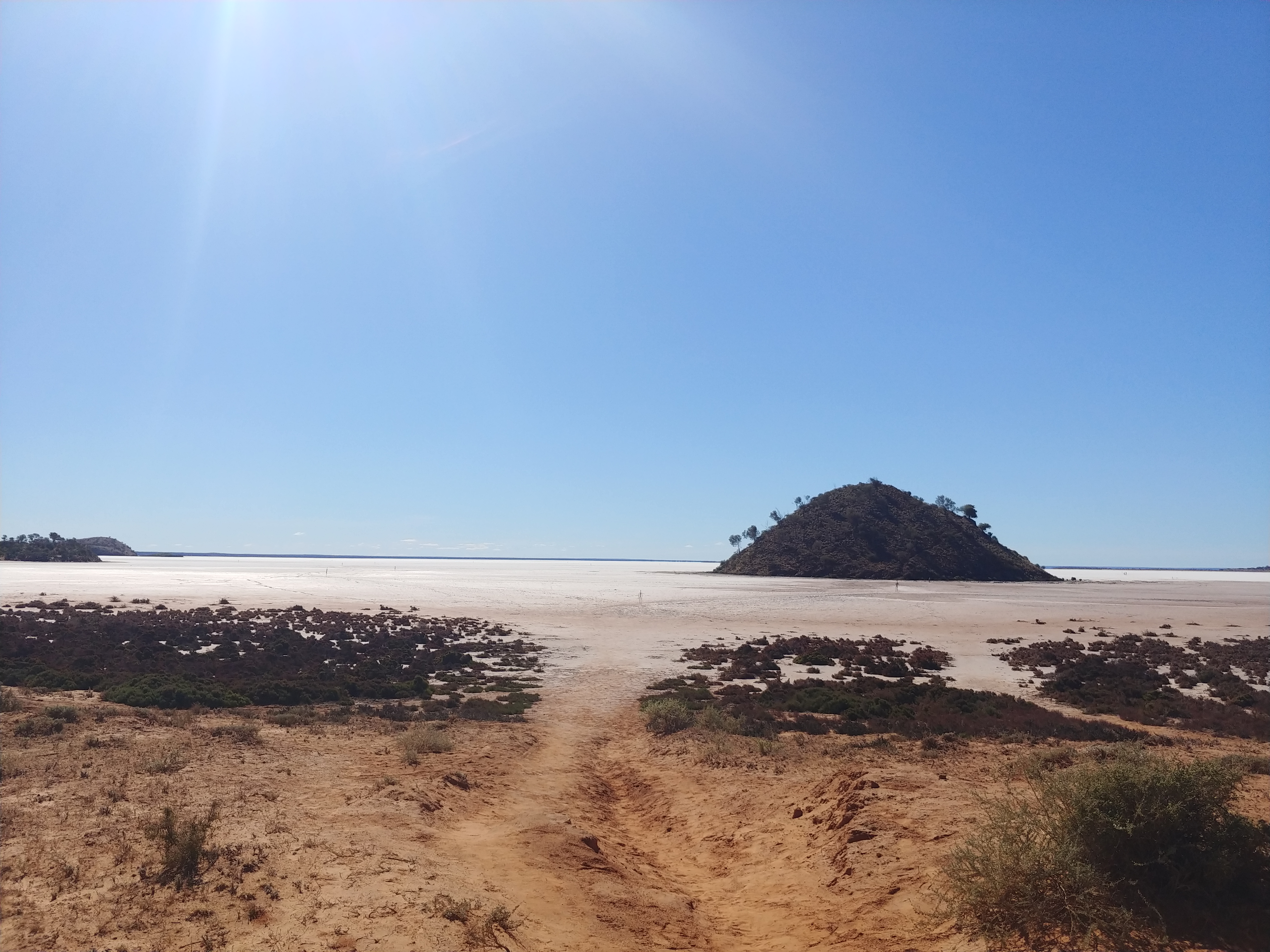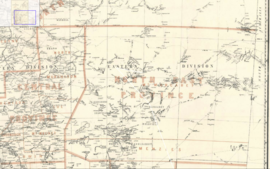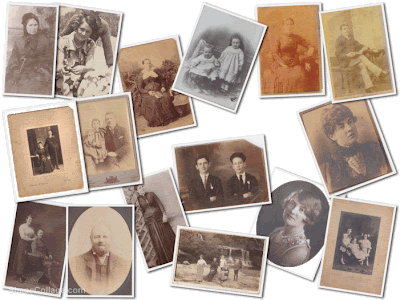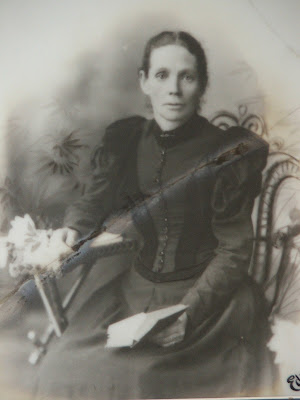Last week I had a short holiday in Perth, my home away from home, to catch up with some friends from the time I lived there.
While in Perth, I spent a few days in Fremantle. Fremantle is also the place where one of my ancestors lived in the last years of her life in the early 1900s, my great grand aunt, Anne Jane RILEY (1849-1920). Anne was one of the younger sisters of my great-grandmother, Margaret Ann RILEY (1843-1927). Anne and Margaret were two of the eleven children whose parents were Thomas RILEY (convict from Ireland) and Harriet LICET (also from Ireland).
Anne started life as Anne Jane RILEY and became, through her two marriages, Ann Jane MALONEY, and then, finally, Annie Jane LENNON. So, while in Fremantle, I did a bit of research about Anne's life. This blogpost is about Anne's last child, John Richard LENNON, who was born in 1898 in NSW and died in 1898 in Western Australia.
Today is the 125th anniversary of baby John Richard LENNON's death.
Little John Richard LENNON's life was short so I wanted to record it here to ensure he is not forgotten. He was my first cousin twice removed.
John Richard LENNON was the son of Annie Jane LENNON (nee RILEY) and John LENNON. He was born some time around February 1898 and he died on 22 August 1898 at the age of six months. During his short life, he travelled with his parents from NSW where he was born to Western Australia where he died.
Most of the information I have about John's short life was drawn from his death certificate (certificate no. 1492, Registrar of BDM, Western Australia):
- He died at Mount Margaret, Western Australia (the Mount Margaret minefield area was located about 20-30km from Laverton in WA).
- His cause of death was "entero colitis exhaustions" (some form of inflammation of the intestines).
- He had been ill for ten days before he died.
- The medical attendants who saw him on the day of his death were J. B. Hurst and M. B. Melbourne.
- His father was John LENNON, a storekeeper.
- His mother was Annie Jane RILEY.
- He was born in Ryde, New South Wales.
- He had spent the first three months of his life in NSW and the second three months of his life in WA.
- The informant of his death was John LENNON, the child's father, whose residence was British Flag, Mt Margaret.
- He was buried the day after he died, on 23 August 2023, at Mt Margaret Cemetery.
- The undertaker was John LENNON, his father.
- There was no minister present at his burial but the witnesses were H. Johnstone, P. Sutcliffe and H. B. Clarke.
 Mount Margaret (Source: https://webarchive.slwa.wa.gov.au/fromanotherview/mount-margaret-laverton-and-kalgoorlie/)
Mount Margaret (Source: https://webarchive.slwa.wa.gov.au/fromanotherview/mount-margaret-laverton-and-kalgoorlie/)Since John's death certificate mentioned that he was buried at Mt Margaret Cemetery, I started searching for information about this cemetery. I came across a post on Moya Sharp's blog, Outback Family History, about Mount Margaret Cemetery, Western Australia. On this post, Moya lists names of thirteen people who were buried at this cemetery. John Richard LENNON was listed as the sixth person on the list and the youngest. It must have been a sad day when Annie and John buried their baby.
Little John's grave is recorded on the Find-a-Grave site.
Source: https://www.findagrave.com/memorial/157807081/john-richard-lennon
There is not a photo of his grave on this site but I have submitted a request for someone to take a photo of the grave (if there is a headstone). Because the cemetery is located on a remote area, I may be waiting a long time for someone to fulfil this request. If I do receive a photo of John's grave, I'll add it to this post in the future.
Moya Sharp provides an account of each of the people who are buried in the Mount Margaret Cemetery on this blogpost:
Deaths in the early days of Mt Margaret. The information provided about John Richard LENNON is as follows:
LENNON John Richard, d 22 Aug 1898, 6mths, at Mount Margaret, Cause: Eutero Colitis, Father: John LENNON (Store Keeper), Mother: Ann Jane RILEY, Registered by Father, Buried: Mt Margaret Cemetery, Born: Ryde NSW, In NSW 3mths in WA 3mths, Reg 14/1898 Mt Margaret.
Mount Margaret Cemetery May 1997 no. 1, photo taken by Andrea Lewis and Jill Heather
Mount Margaret Cemetery May 1997 no. 2, photo taken by Andrea Lewis and Jill Heather
John's death certificate notes that he was born in Ryde, NSW, but I have yet to find any record of his birth in the NSW Births Deaths and Marriages index site. When John was three months old, around May 1898, it seems that John and Annie LENNON, with their baby John, travelled to the WA goldfields from NSW. If they left from Ryde in NSW, the journey of almost 4000 km must have been a difficult one in 1898.
Ryde to Mount Margaret (Source: Google Maps)
Here is a map of the Mount Margaret area in the Laverton district around 1900:

(Source: Wikipedia: Electoral district of Mount Margaret)
On Wikipedia, Mount Margaret is described as:
Mount Margaret was an abandoned town located 900 kilometres (559 mi) northeast of Perth and 31 kilometres (19 mi) southwest of Laverton in the Goldfields-Esperance region of Western Australia.
The first European to visit the area was government surveyor John Forrest who passed through in 1869 while on an expedition in search of the lost explorer Ludwig Leichhardt. On 25 June he named a nearby hill Mount Margaret after Margaret Elvire Hamersley whom he later married in 1876. The local indigenous name for the hill is Kalgara.
Gold was discovered at the site of the future town in 1893 by prospectors James Ross and Bob McKenzie. The town's main mine was the Mt Morven (formerly the Mt Margaret Reward), situated on the eastern side of the townsite. By 1896 the local progress association began campaigning for the townsite to be declared. By 1897 lots had been surveyed and the townsite was gazetted in the same year.
A police station opened in the town in 1898 but was closed in 1899.

Source: https://en.wikipedia.org/wiki/Mount_Margaret,_Western_Australia
On her Outback Family History blog, Moya Sharp notes that the original Mt Margaret townsite and cemetery is located about 5km from the Mount Margaret Aboriginal community which was established in 1921. According to Wikipedia, this community was previously known as the Mount Margaret Mission.
Further information can be found about the Mount Margaret Minefield in the Laverton Shire at this mindat.org site: Mount Margaret Goldfield, Laverton Shire, Western Australia, Australia. The From Another View blogpost contains a blog about Mount Margaret in recent times (2018): Mount Margaret, Laverton and Kalgoorlie.
Rest in peace, John Richard LENNON. John was the child of Anne Jane LENNON (nee RILEY) and John LENNON.
In the future, I'll provide a link to a blogpost about the life of Anne Jane RILEY (when I write it!).





























%20Catherine%201903%20Electoral%20Roll%20Rozelle%20ZOOM.jpg)





%20Margaret%201903%20Electoral%20roll%20-%20Drummoyne%20ZOOM.jpg)

%20Margaret%201903%20Electoral%20Roll%20%E2%80%93%20Orange%20ZOOM.jpg)











